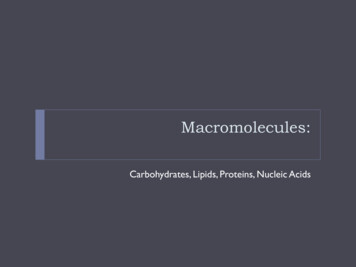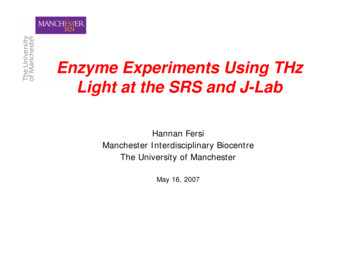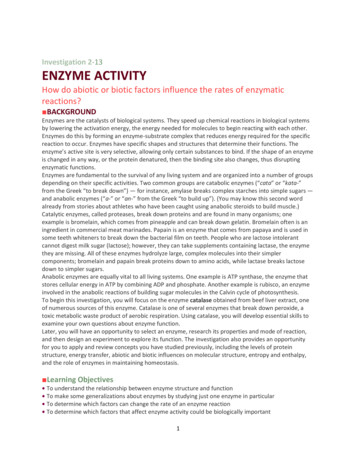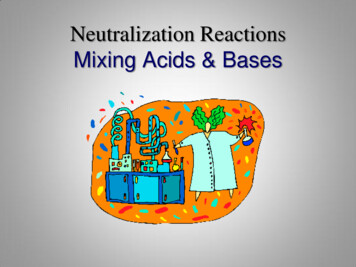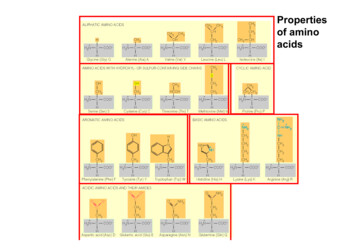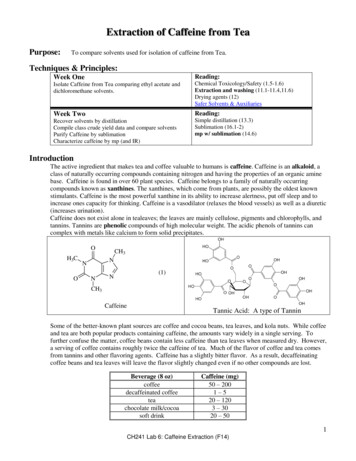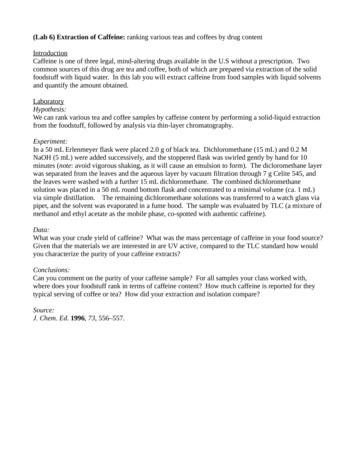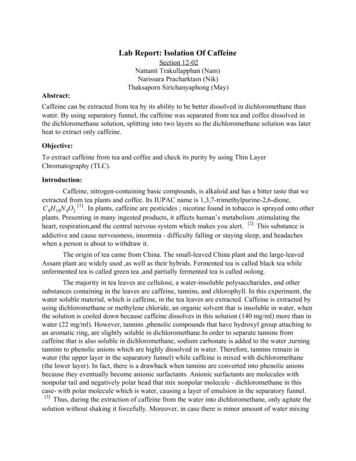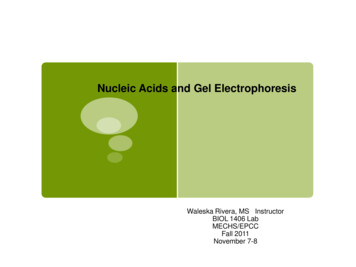
Transcription
Nucleic Acids and Gel ElectrophoresisWaleska Rivera, MS InstructorBIOL 1406 LabMECHS/EPCCFall 2011November 7-8
Did you know? Saliva’senzymes cannot Enzymes are held together byattraction between oppositelycharged molecules, a bit like thepoles on magnets. When acid isintroduced into the stomach andpH drops, there are loads ofpositive charges floating aroundwhich mess up the charges in theenzyme, so it breaks down.
Protein Venn diagramDefinitionExampleA long chain of 50 or moreamino acids linked together;a large polypeptide. ydrogen peroxideRiboflavin
Nucleic Acidspolymers Nucleic acids are ,just asproteinspolymersare . The monomers that conform proteinsareamino .acids The monomers that conform nucleicacids are .nucleotides
Nucleotides’ Components A phosphate group A sugar A nitrogenous base
Gel Electrophoresis Technique used to separatebiological molecules. Developed in the1950’s byOliver .Smithies It works like sieving dirt through asieve:Smaller particles gothrough faster thanlargerparticles.
How it works: An electrical current is applied to agel. The gel is .agarose Made from anextract of red-algae. Acts as a molecular strainer,molecules from movingpreventingtoo .quicklydye will be added to In this case, athe gel in order to thecolormolecules.
What is happening in this experiment? An electrical current is applied to thegel. Molecules then travel through thegel at different speeds, according toweighttheirsize and . When the electrical current isremoved, then the molecules stopmoving through the gel.
Homework Prepare Venn diagrams for: RNADNANucleotidesGel electrophoresis
Roles: Timekeeper/ Leader/ Gel Handler Scribe/ Runner/ Load samples Secondary Timekeeper/ Cleaner/Wipes bench Electric/ Cleaner
DYES A. Malachite Green B. Orange G C. Safranin O D. Alizarin Red-S E. M-Cresol Purple F. Unknown (mix of 2-3 dyes)
Wipes bench Electric/ Cleaner . E. M-Cresol Purple F. Unknown (mix of 2-3 dyes) Title: Enzyme Catalysis Lab Nucleic Acids and Gel Electrophoresis Author:
